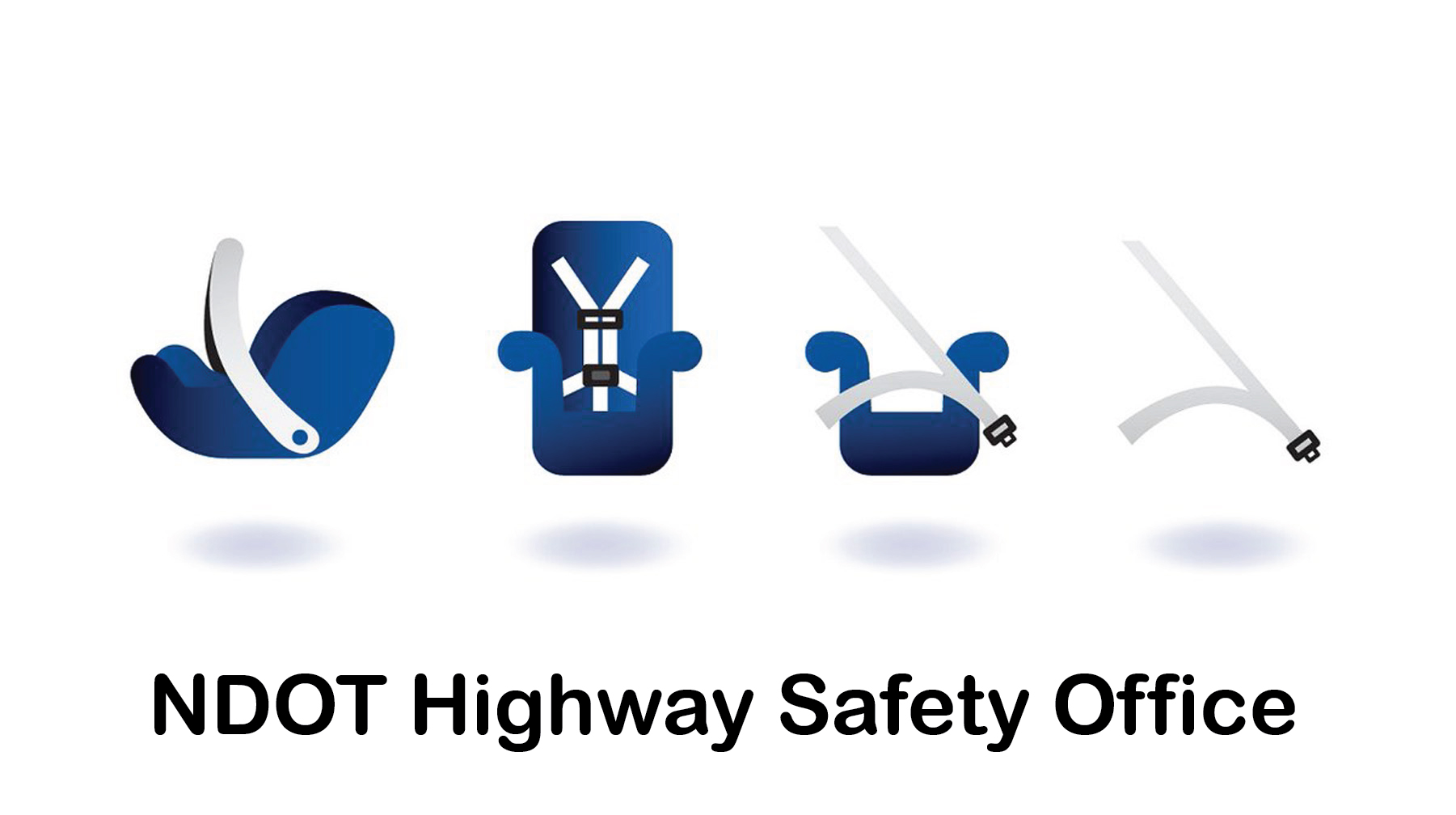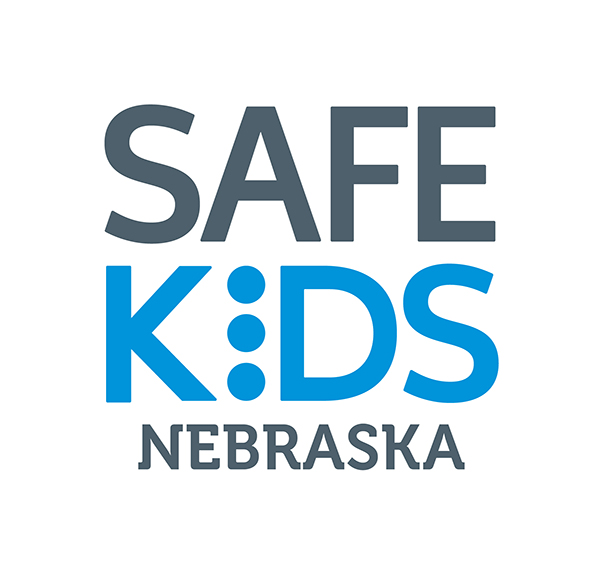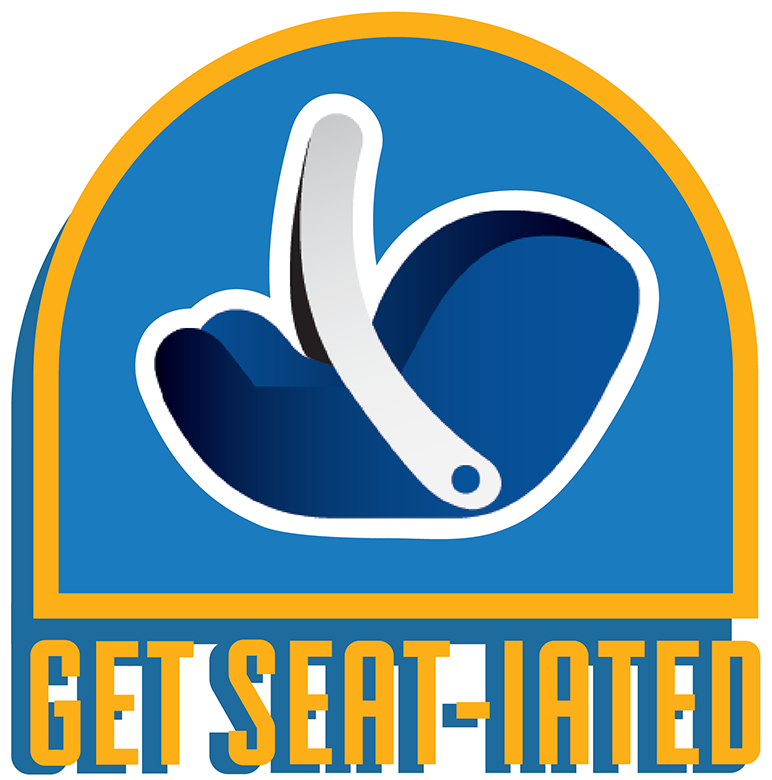- Expand Crash Data
- Alcohol & Drug Related Crash Data
- Animal Related Crash Data
- Expand Child Passenger Safety Crash Data
- Motorcycle/Moped Crash Data
- Non-Motor Vehicle: Bicycle, Pedestrian, ATV, Train, etc. Crash Data
- Occupant Protection Crash Data
- Older Drivers Crash Data
- Teen Drivers Crash Data
- Speed Crash Data
- Distracted Driving Crash Data
- Distracted Drowsy Driving Crash Data

Nebraska Children/Child Passenger Related Crash Data:
- Child Restraint Usage Rate Chart - 2014–2023
- Children (Age 0-14) Killed in Motor Vehicle Traffic Crashes - 2005–2020
- Children (Age 0-15) Involved in Motor Vehicle Traffic Crashes - 2005–2020
- Child Restraint Convictions - 2015-2024
- The Use of Child Safety Seats in Nebraska - 2017 | 2018 | 2021 | 2023
Nebraska Child Safety Restraint Law
(effective January 1, 2019)
- All children up to age eight must ride correctly secured in a federally-approved child safety seat.
- Children ride rear-facing until up to age two or until they reach the upper weight or height limit allowed by the car seat’s manufacturer.
- Children under age eight must ride in the back seat, as long as there is a back seat equipped with a seatbelt and is not already occupied by other children under eight years of age.
- Children ages eight to eighteen must ride secured in a safety belt or child safety seat (booster seat).
- Childcare providers must transport all children securely in an appropriate federally-approved child safety seat or safety belt.
- Children up to age eighteen are prohibited from riding in cargo areas.
- Violation carries a $25 fine plus court costs and 1 point is assessed against the operator’s driving record.
For more information and handout items click on the following:
Car Seat Check Events
Check events are set up in public areas such as shopping center parking lots. Checks are conducted for a set period of time (usually 3-4 hours). Parents and caregivers bring their child’s safety seat, motor vehicle, and child to the event. Trained child passenger safety technicians perform an evaluation for all children in the vehicle who are under 13 years old. They will check for the following:
- Correct selection (is the child safety seat the correct size for the child),
- Harnessing (is the child secured correctly in the seat),
- Installation (is the child safety seat correctly installed in the vehicle),
- Recalls (is there a manufacturing defect with the child safety seat).
To find out when the next event will be held in your area, visit the Nebraska Safe Kid’s website.

Child Passenger Safety (CPS) Technician | Register
The National Standardized Child Passenger Safety Training provides the basic technical skills, experience, and knowledge of the proper use and installation of child passenger safety seats required to conduct child safety seat inspections. To keep apprised of the technological changes and federal regulations that affect the correct installation of child safety seats, technicians and instructors must be recertified every two (2) years.
Upon successful completion of the training program, CPS technicians have the knowledge and skills to conduct the following:
- Secure children in appropriate child restraint systems.
- Install child restraint systems in multiple types of vehicles.
- Educate others on how to correctly install child restraint systems in vehicles.
- Educate others about how to properly restrain children in motor vehicles.
- Organize, coordinate, or assist at inspection stations and checkup events.
- Use appropriate resources to retrieve information related to CPS.
- Respond appropriately to legal and ethical issues related to the role of the CPS technician.
- Obtain information from CPS resources in response to requests for information that is not readily available.
The training is for law enforcement, nurses, school bus drivers, community health educators, daycare providers, parents, dealership staff, and others that work with or provide information about child safety seats. Participants should be prepared for the physical activity required for installing child safety seats. Students take both written and hands-on tests and participate in a child safety seat check-up event. At the check-up event, students must effectively communicate and demonstrate proper installations to the public.
At the conclusion of the training, certification is obtained through the National SAFE KIDS Campaign. Recertification is required every two (2) years through an on-line test and child safety seat sign-off.
Child Passenger Safety Technician Certification Course:
Child Passenger Safety (CPS)
Technician Certification Courses - Registration
2023 Classes
- April 12-14 in Omaha
- April 26-28 in Hastings
- Renewal Class on April 25
- August 16-18 in Lincoln
Nebraska Child Safety Seat (CSS) Inspection Stations
Like Check events, parents can get information and assistance on the proper use of child safety seats at Inspection Stations. Unlike Check events, Inspection Stations are permanent locations. Most Inspection Stations require you to schedule an appointment.
Inspection Station Application
How to become a Nebraska Child Safety Seat (CSS) inspection station: applicants must be either a political subdivision or 501c3 non–profit organization, upon recognition, as a Nebraska CSS inspection station, the organization will conduct child safety seat inspections according to the application guidelines.
- CSS Inspection Station Guidelines
- CSS Inspection Station Inventory Status Report
- NHTSA Child Safety Seat Inspection Website Form
Nebraska CSS inspection stations are eligible for funding assistance to purchase child restraint systems for low-income families.
Nebraska Child Restraint Law
Differences between what is "Legal" and what is "Recommended":
Parents and other caregivers frequently ask the question “what is the law regarding buckling up my child?” Most parents and caregivers assume the law is the safest and what is recommended by safety experts. However, this is not always the case. The Nebraska child passenger safety and safety belt laws, like other states’ restraint laws, are the result of compromises between the “best practice” recommendations of safety experts and provisions the legislators feel are practical, enforceable, and will be tolerated by the general public and their own constituents.
Occupant restraint laws should be considered to be minimum standards. The two biggest differences between what is legal vs. what is recommended are:
- The laws are based on age whereas “best practice” recommendations for the best crash protection are based on weight and physical development.
- None of these laws require all occupants be buckled up at all times in all seating positions.
Best Practice Recommendations
Best Practice recommendations for providing maximum protection for an infant, child, or adult can be found on the Safe Kids Nebraska or safercar.gov websites.
Important Safety Reminders
- Failure to read the child safety seat instructions and the vehicle owner’s manual instructions regarding child safety seats, could result in child's death or serious injury as a failure of the child safety seat not being properly secured and/or properly restrained.
- Children in rear-facing child safety seats should not be placed in the front seat of vehicles equipped with a passenger-side air bag. The impact of a deploying air bag striking a rear-facing child safety seat could result in injury or death to the child.
- NHTSA also recommends children 12 and younger sit in the rear seat away from the force of a deploying air bag.
- Children age 12 and younger are safest when properly buckled in the back seat of a motor vehicle.
- Always read the child safety seat manufacturer's instructions and the vehicle owner's manual instructions.


